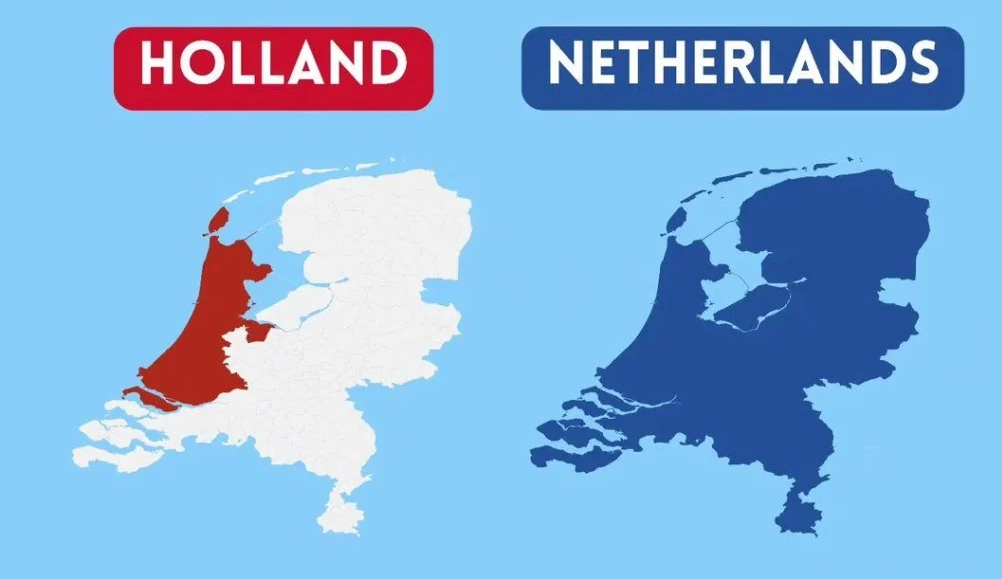Most People Call It Holland—But That’s Not Quite Right!
Many people around the world refer to the Netherlands as “Holland,” but that’s only part of the story. While the name Holland is often used, it technically refers to just two provinces: North Holland and South Holland. These are the most well-known regions, home to major cities like Amsterdam, Rotterdam, and The Hague—which is why the name “Holland” has stuck.
However, the Netherlands is much more than just these two provinces. The country is made up of 12 provinces in total, each with its own unique culture, history, and geography. Calling the whole country “Holland” overlooks the diversity and rich heritage of other regions such as Friesland, Limburg, and Gelderland.

The Correct Name: The Netherlands
The full name of the country is the Kingdom of the Netherlands. It consists of 12 provinces, not just North and South Holland. The Netherlands also includes territories in the Caribbean, such as Aruba, Curaçao, and Sint Maarten, which are autonomous countries within the kingdom. Additionally, there are three special municipalities in the Caribbean: Bonaire, Sint Eustatius, and Saba. These islands are integral parts of the Netherlands but have their own local governments and cultural identities.
Why the Confusion?
Historically, the provinces of Holland were the most powerful and influential during the Dutch Golden Age in the 17th century. Merchants, sailors, and traders from Holland traveled the world, establishing trade routes, colonies, and economic centers across the globe. Because these traders often introduced themselves as being from Holland, foreign nations began associating the entire country with that name.
In addition, the Dutch Republic (the predecessor of the modern Netherlands) was largely dominated by the economic success of Holland. Its wealth, navy, and influence made it the face of the nation on the international stage. Over time, the shorthand “Holland” became more recognizable than “the Netherlands,” despite being technically incorrect.
The Other Provinces of the Netherlands
While Holland was historically dominant, the Netherlands’ other 10 provinces also played key roles in the nation’s development. For example:
- Friesland has its own unique language (Frisian) and traditions.
- Groningen and Drenthe have ancient megalithic structures called hunebedden.
- Zeeland has a long maritime history and was instrumental in Dutch naval power.
- Limburg has a distinct dialect and hilly landscape, unlike the rest of the mostly flat Netherlands. Each region contributes to the country’s identity, and referring only to Holland ignores this diversity.
What Should You Say?
If you want to be historically and geographically correct, refer to the country as the Netherlands. If you’re talking specifically about North Holland and South Holland, then using “Holland” is fine. Either way, the Dutch are friendly and won’t mind too much—just know that not all Dutch people are from Holland!
For those who want to travel deeper and discover the unique aspects of every Dutch province, there’s so much more beyond the common tourist spots of Amsterdam and Rotterdam. Whether it’s Friesland’s lakes, Utrecht’s medieval charm, or the nature of the Veluwe, exploring the entire Netherlands gives a richer experience than just visiting “Holland.”